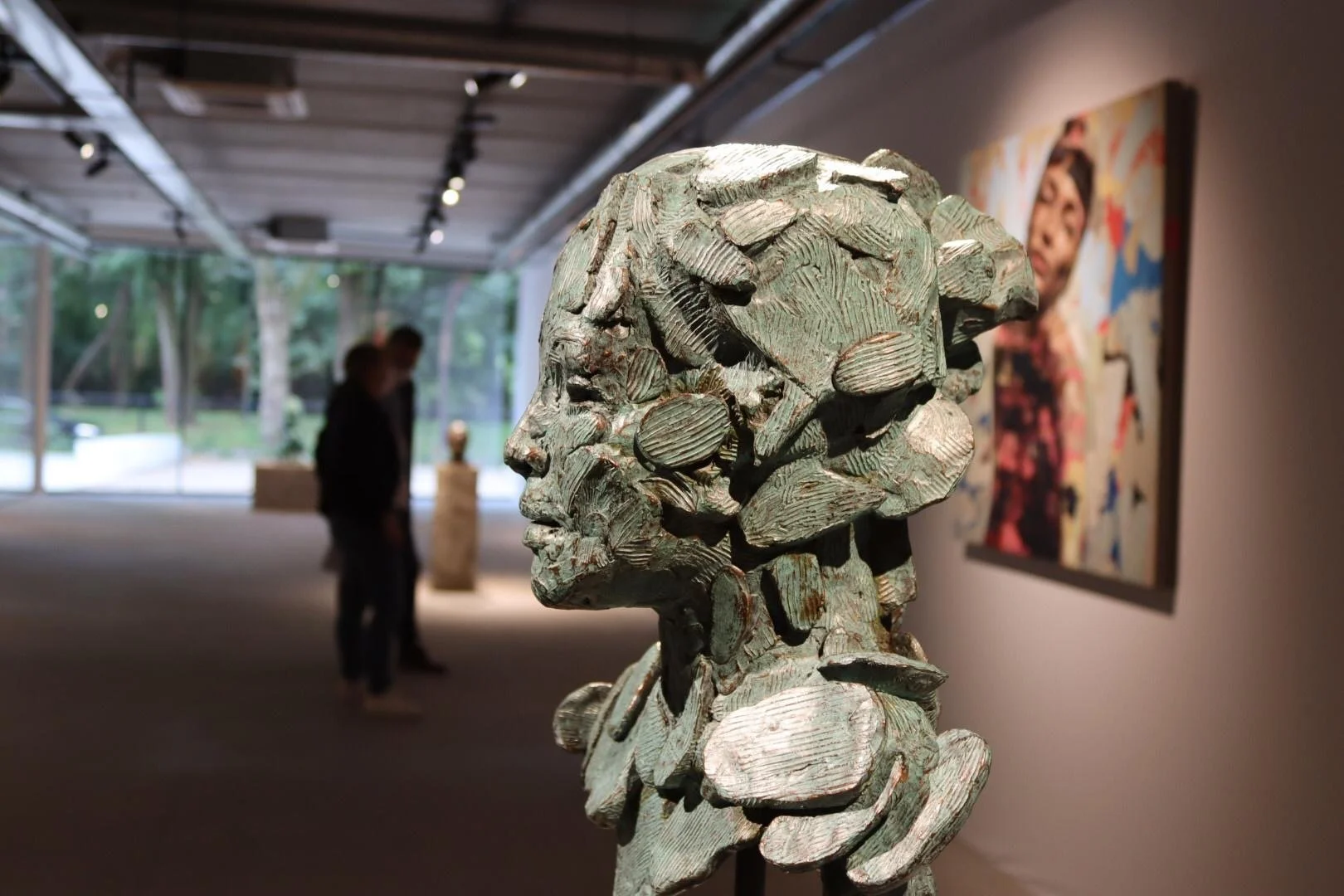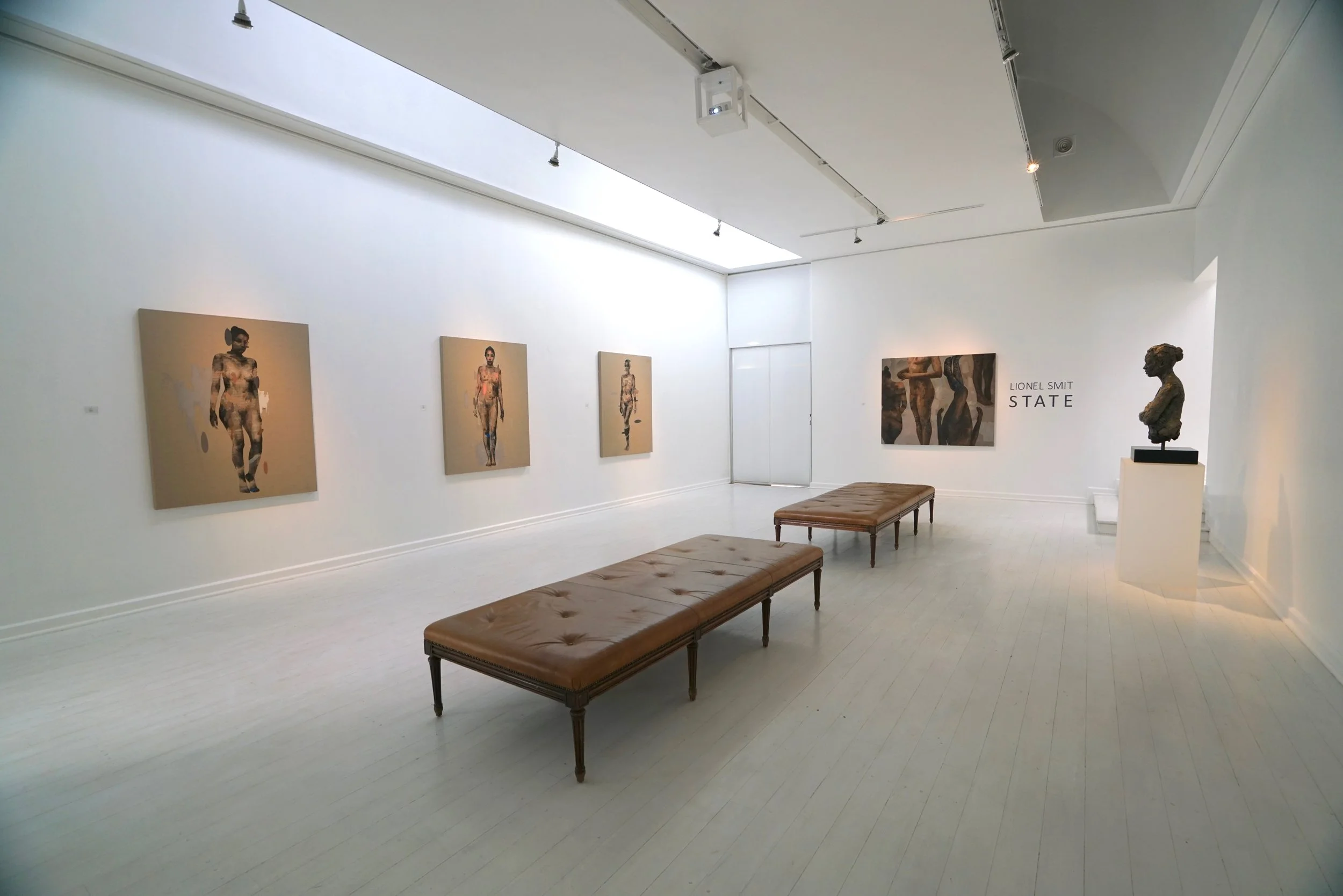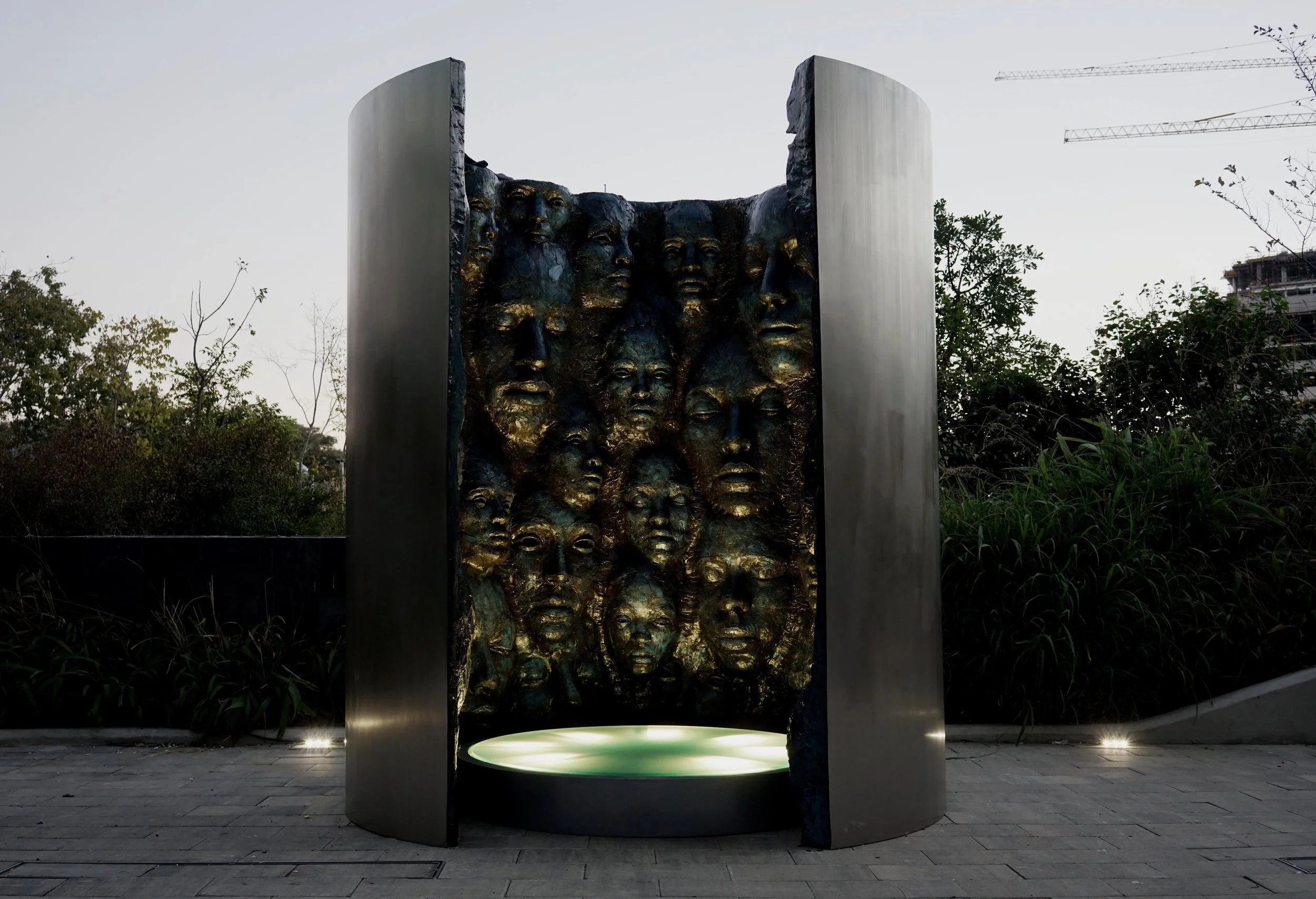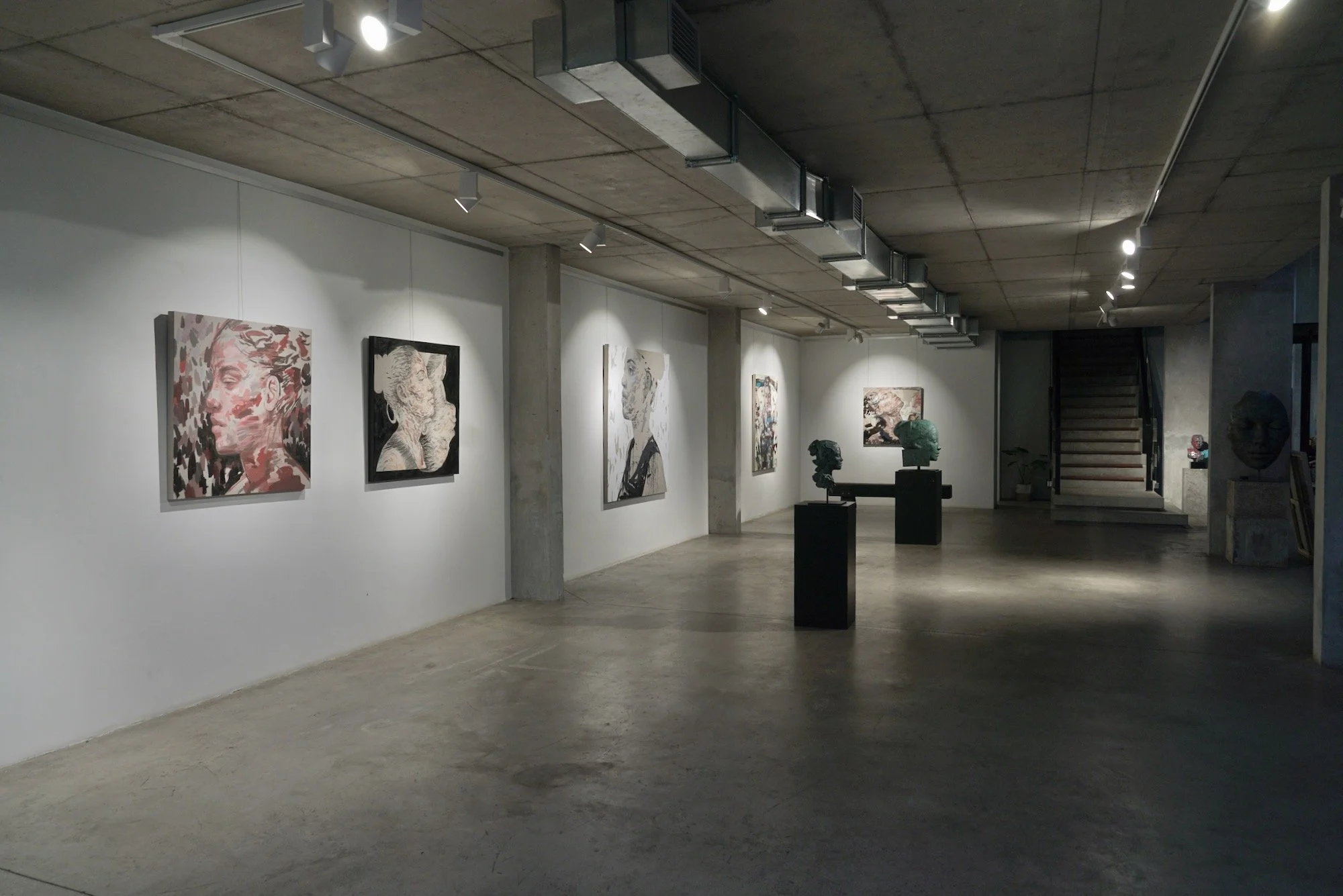Lionel Smit, in collaboration with Everard Read Johannesburg, presented the solo exhibition STATE in 2017. This body of work explores the idea of the different emotional states we find ourselves in and how surroundings influence that state of mind.
Through adding video works, Smit created an environment where he influenced the exhibition space, allowing him to direct the viewers’ state. This has a profound impact on how we experience the work.
Various works explore the female figure as a portrait, with the continuation of his ideas on the construction of identity with layers of paint and silkscreen fabricating the fragmentation of the subject.
The exhibition ran from 24 August to 27 September 2017 following a successful show in London, showcasing monumental portraiture, sculpture, silkscreens, and multimedia video installations.
A few words from Lionel about his inspiration behind the exhibition:
The idea of the state exhibition is to create rooms that explore different states of mind or different states of emotion. I created every room with some video work which I’m really interested in exploring those emotional states of mind or to at least put the viewer into a different state as they walk into the room.
For instance, a video with two oceans in slow motion going apart from each other, which was the video I took of the Baltic Sea while I was on a ferry. Afterward looking at the footage and translating that into something that becomes almost hypnotic in a way I think most of the works on the show video-wise were kind of made to put you into this almost state of mind as you look at it you drift away a little bit and then that would obviously influence you looking at the whole exhibition and looking at each room.
You can become so immersed in the work that you become almost too sensitive as a viewer so I try and detach myself from what was created and approach it as an outside viewer which is an almost impossible thing to do but I think the videos I connect with on an emotional level definitely and I think it draws something out of me emotionally while creating and looking at them.
I have always been involved with photography, taking photographs of my subjects to paint. I think that whole process evolved you know so I’ve been painting for more or less 20 years so that process and the idea of using the camera as part of my process has just evolved into video work and I think video has become more popular with everyone having smartphones around and social media.
Everything is quite different with moving images you know, it’s almost like people have become bored with the still image and moving onto the next thing. I think it was a natural process for me to do that and although I have been playing with that idea for years and years, this is the first time I really explored it in-depth and created four major videos for the show.
I am in a transition phase with my work, trying to move away from certain things. I am just naturally being drawn to certain parts that I have not explored yet. Artists get obsessed with things, I’ll get obsessed with portraits and I think I’m trying to divert myself from that obsession a little bit.
I think it just needs to take its natural course. The idea of the whole figure came from way back from my early work, I used to do a lot of full figures and then I started focusing more on the portrait. Then I wanted to explore that again, so I think I took these as you know almost like an old exploration revisited and worked with full figures again.
I really enjoy that because I think the intensity of the figures gives you a whole different idea and a whole different approach to the way of viewing the work. And immediately it translates into something different than only the portraits do. So I basically separated it into different states, the one was only figurative work and connecting with the figures and the paintings, they were figures overlapping on the videos and now these figures become almost dreamy in a way and something you can’t really capture in a painting, you can translate into video and then affect the way people look at the paintings.














